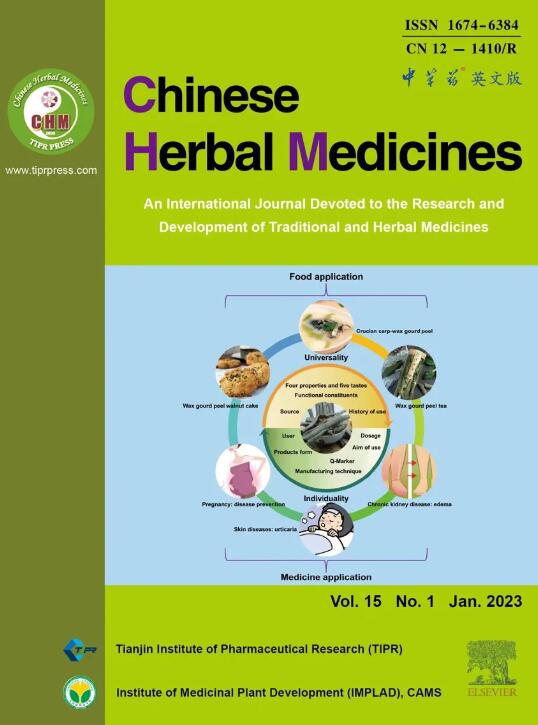Research on comprehensive quality consistency evaluation strategy for TCM Granules: A case study with sugar-free Yangwei Granules produced by fluid-bed granulation
IF 4.7
4区 医学
Q1 CHEMISTRY, MEDICINAL
引用次数: 0
Abstract
Objective
To develop a quality consistency evaluation strategy for traditional Chinese medicine (TCM) granules using sugar free Yangwei Granules as a model drug, and demonstrate the effectiveness of the developed method.
Methods
The strategy integrates several methods including, HPLC fingerprint and physical fingerprint methods analyze the similarity in chemical and physical properties of the TCM granule samples. Near-infrared (NIR) spectroscopy with principal components cluster analysis method is used to monitor normal operating conditions (NOC) samples accurately and to identify different types of abnormal operating conditions (AOC) samples, particularly those that deviate from the normal range.
Results
The combined use of HPLC fingerprint and physical fingerprint provides insights into the chemical and physical properties of the samples. NIR spectroscopy, combined with principal components cluster analysis, achieves high accuracy in monitoring NOC samples and identifying AOC samples without misjudgment. The approach proves useful as a complementary method in cases where HPLC fingerprint and physical fingerprint alone lack sufficient resolution.
Conclusion
This study establishes the feasibility and utility of the integrated approach for assessing the quality consistency of TCM granules. The strategy shows a high degree of generalization and holds significant importance for enhancing the quality control processes of TCM granules.
中药颗粒综合质量一致性评价策略研究——以无糖养胃颗粒流化床造粒为例
目的以无糖养胃颗粒为模型药,建立中药颗粒质量一致性评价策略,并验证该方法的有效性。方法采用HPLC指纹图谱和物理指纹图谱相结合的方法,对中药颗粒样品的理化性质进行相似性分析。采用主成分聚类分析方法的近红外光谱(NIR)技术对正常工况(NOC)样品进行准确监测,并识别不同类型的异常工况(AOC)样品,特别是偏离正常范围的样品。结果HPLC指纹图谱与物理指纹图谱相结合,对样品的理化性质有了更深入的了解。近红外光谱与主成分聚类分析相结合,在监测NOC样品和识别AOC样品方面具有较高的准确性,不会出现误判。在HPLC指纹图谱和物理指纹图谱单独缺乏足够分辨率的情况下,该方法是一种有效的补充方法。结论本研究建立了中药颗粒质量一致性综合评价方法的可行性和实用性。该策略具有高度的通用性,对提高中药颗粒的质量控制过程具有重要意义。
本文章由计算机程序翻译,如有差异,请以英文原文为准。
求助全文
约1分钟内获得全文
求助全文
来源期刊

Chinese Herbal Medicines
CHEMISTRY, MEDICINAL-
CiteScore
4.40
自引率
5.30%
发文量
629
审稿时长
10 weeks
期刊介绍:
Chinese Herbal Medicines is intended to disseminate the latest developments and research progress in traditional and herbal medical sciences to researchers, practitioners, academics and administrators worldwide in the field of traditional and herbal medicines. The journal's international coverage ensures that research and progress from all regions of the world are widely included.
CHM is a core journal of Chinese science and technology. The journal entered into the ESCI database in 2017, and then was included in PMC, Scopus and other important international search systems. In 2019, CHM was successfully selected for the “China Science and Technology Journal Excellence Action Plan” project, which has markedly improved its international influence and industry popularity. CHM obtained the first impact factor of 3.8 in Journal Citation Reports (JCR) in 2023.
 求助内容:
求助内容: 应助结果提醒方式:
应助结果提醒方式:


